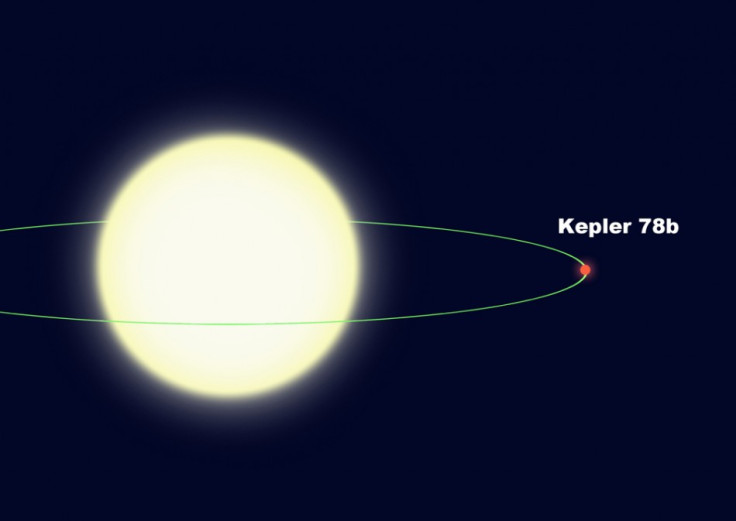Kepler-78b: Astronomers Discover Planet 'that Should Not Exist'
Astronomers find lava world that orbits its star once every eight hours

Astronomers have discovered an Earth-sized planet that should not exist as it is too close to its star.
Kepler-78b is a world of lava and orbits its star once ever eight-and-a-half hours, one of the tightest orbits known.
It is less than one million miles from its star. According to current theories on planet formation, Kepler-78b could not have formed so close to it star and could not have moved there.
David Latham, from the Harvard-Smithsonian Centre for Astrophysics, said: "This planet is a complete mystery. We don't know how it formed or how it got to where it is today. What we do know is that it's not going to last forever."

Fellow astronomer Dimitar Sasselov said the planet would end up being consumed by its star in the very near future "astronomically speaking", he said.
Scientists believe that when the planet was forming, its young star was larger than it is now, meaning the planet's orbit would have been inside the star - an impossibility.
"You can't form a planet inside a star," Sasselov said. "It couldn't have formed further out and migrated inward, because it would have migrated all the way into the star. This planet is an enigma."

Latham said Kepler-78b is one of a new class of planets recently identified by Nasa's Kepler spacecraft. All planets orbit their stars in less than 12 hours and are about the size of Earth. "Kepler-78b is the poster child for this new class of planets," he said.
As well as being an astronomical mystery, Kepler-78b is the first known Earth-sized world with a similar density to our planet, meaning it is believed to be composed of iron and rock. It is about 20% larger than Earth and weighs nearly twice as much.
The astronomers said it was a "doomed world" as it would eventually move so close to its star that it would be ripped apart - within the next three billion years.
© Copyright IBTimes 2025. All rights reserved.






















